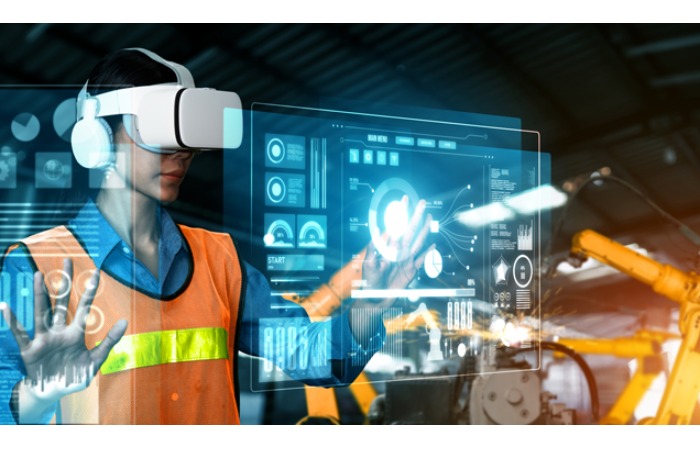
Building Smarter
In a world where infrastructure is seen as the backbone of development, the construction sector—long accused of resisting change—is finally undergoing a radical transformation. At the heart of this shift lies the convergence of artificial intelligence, cloud platforms, and connected systems.
Wiring the machines
“We have 35,000 machines,” said SP Rajan, VP & Head of the Competency Center, RBF Business Unit, L&T Construction. “And today, every one of them is connected. If a machine isn’t transmitting data, it’s treated as being ‘under breakdown’.”
It wasn’t always this way. Rajan recalled the early days of L&T’s digital journey—sparked by a candid challenge from an aviation expert: if airlines can process terabytes of data every flight, why can’t construction?
From that provocation in 2015 emerged a roadmap that included sensors, IoT, AI-led contract analysis, and automated equipment monitoring. “What started with productivity tracking,” said Rajan, “has now evolved into intelligent procurement and even AI-assisted contract management.”
But the bigger challenge, Rajan emphasized, is on-site adoption. “We had to overcome massive resistance. People were sceptical, especially when we rolled out automated motor graders. But once we got champions on board and trained them, those same people said, ‘If you’re taking this machine away, take my resignation too’.”
The most powerful insight, he added, lies not in abstract tools but in applying tech to the most labour-intensive aspects of construction: concrete, shuttering, and reinforcement (CSR). “Nearly 65 per cent of our construction work revolves around CSR. If we can digitise and automate processes here—like reinforcement laying, quality checks, and formwork—we can unlock real, measurable gains.”
Real estate gets real with Cloud
If L&T is about scale, Tata Realty is about integration. “Five years ago, we knew we were lagging,” said Girish Hadkar, Chief Information & Digital Officer. “So, we decided to leapfrog.”
Their answer was a cloud-first, SaaS-centric approach. The company now operates a digital stack covering the entire lifecycle—from customer interactions on Salesforce to HR operations on Oracle Cloud, and procurement managed through FEGO Cloud integrated with SAP. Even construction workflows are hosted on the Autodesk Construction Cloud.
“We’ve even begun using AI-powered bots and NLP agents,” Hadkar said. “And now, we’re evolving into agentic AI—where digital assistants can autonomously complete tasks.”
However, Hadkar cautioned that for any AI transformation to succeed, fundamentals must be in place. “It’s not about jumping to game-changing AI. Start with ‘everyday AI’ in areas like back-end processes. But above all, align it with business goals, build cross-functional teams—what Gartner calls ‘fusion teams’—and ensure employees are prepared for the change. Because today, they’re saying: train me so I can ride the AI wave, not be crushed by it.”
Global view
With a global presence in 80+ countries, JLL India has long embraced tech, but the real transformation began post-2015. “We broke down every business function—design, procurement, construction—and digitized them piece by piece,” said Sabyasachi Chatterjee, Senior Director – Technology & Transformation.
One standout strategy? Investing in AI-first startups through JLL Spark. Chatterjee highlighted the use of AI to automate everything from floor plan generation to optimising construction schedules. “We’ve used tools like Alice Technologies to input Primavera schedules and get AI-generated optimised construction plans.”
He also explained how the construction sector is moving through distinct phases of AI maturity. “First was parametric AI, then generative, now we’re entering the age of agentic AI—where digital agents execute subtasks—and soon, physical AI, where robotics will take over physical functions.”
According to Chatterjee, these developments are more than hype. “Project managers like us will benefit most from agentic AI. Contractors, on the other hand, will see transformative results from physical AI like robotics and automation.”
From Tools to Intelligence
Roshan Bucha, Technical Solutions Manager for Construction, Autodesk India, represents the tech enabler’s side of this story. “We began with AutoCAD,” he said, “but now we’re deeply invested in digital twins, common data environments, and AI-driven predictive analytics.”
Autodesk has helped firms like Tata Realty and JLL unify fragmented data into cohesive platforms—critical for AI adoption. But Bucha warned that for AI to work, the groundwork must be solid. “Structured, standardised data is non-negotiable. Without it, 20–30% of manpower is wasted in retrieval.”
Bucha cited an example where standardising file names and processes for a hospital project enabled AI to predict construction delays and risk factors within six months. “It’s not flashy, but that’s what delivers impact,” he said.
The road ahead
Despite the buzz around AI, they agreed that the construction industry must temper its ambitions with discipline.
“AI can’t fix natural stupidity,” Singh joked, referencing a client comment. But his point struck a chord: technology is only as good as the vision, discipline, and mindset driving it.
As India pursues a $1.4 trillion infrastructure pipeline under the National Infrastructure Plan, these digital practices aren’t just modern—they’re mission-critical.
From L&T’s reinforcement-focused innovation and Tata Realty’s cloud-based workflows, to JLL’s AI-driven PM tools and Autodesk’s data standardisation frameworks—the future is here, not evenly distributed, but steadily converging.
And as Rajan summed up: “If we focus our tech where it matters most—on concrete, shuttering, and reinforcement—we won’t just digitise construction. We’ll redefine it.”


 +91-22-24193000
+91-22-24193000 Subscriber@ASAPPinfoGlobal.com
Subscriber@ASAPPinfoGlobal.com